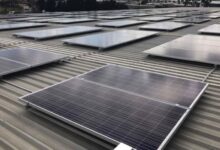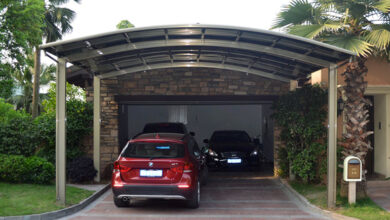
6 Roofing Problems to Check for Ahead of the Winter Months
Before the harsh months of winter make an appearance, all home and business owners should inspect their roofs for signs of possible problems. Once Winter is here and snow begins to fall, it’ll become much more difficult to spot trouble areas with the roof. The weight of the snow, ice, and water once everything melts can also turn small roofing problems into much larger ones.
During the fall, there are a few common problems with roofs you should keep an eye out for. Spot signs of trouble during the fall and correct the issues before it’s too late. A new and healthy roof will keep your home or business safe during the entire winter.
Not sure where to begin? Continue reading below for our list of several roofing issues to be on the lookout for.
Table of Contents
1. Holes in the Roof
Holes in the roof present a major problem. Not only will holes in your roof cause your energy bill to skyrocket, but it also creates an entry point for insects and small critters to enter. During the winter, there will be an even more significant need to seek warmth and shelter for these critters.
Small holes in the roof can also cause bigger issues during the winter when the weight of the ice, snow, or hail on the roof causes the hole to expand. To prevent leaks and other possible issues, you should repair any holes in the roof you find, even the smallest ones not causing leaks. A great way to determine if your roof has a hole in it is to enter the attic during daylight.
See if you can spot any light shining through the roof. Otherwise, it’s best to hire professional roofers such as Proformance Roofing to conduct an inspection for you.
2. Lifted Shingles
Any lifted shingles on the roof can lead to serious water damage. Bad weather or high winds can cause shingles, tiles, or metal flashing on the roof to lift up. When this happens, your roof is left exposed to all of the natural elements.
Once this happens, your home or business becomes more susceptible to water damage and mold. You should notice the dripping, ceiling stains, moisture, mold, and other water stains in the home or building if the damage is severe. As soon as you notice the shingles are lifting from the roof, you should have them nailed back down.
The sooner you nail them back down, the sooner your home or building is weatherproof again. For this reason, it’s essential to have it completed before winter.
3. Roof Leaks
Any type of roof leak is bad no matter how big or small. You can check for a leaking roof from the inside of your home or building. To do this, look for dark spots on the walls or ceiling, check for dripping water, try to spot sagging areas in the ceiling, and any light shining through as well.
A roof that’s leaking needs to be fixed as soon as possible. Joists should also be monitored on a regular basis for dampness, fungus, rot, and woodworm.
4. Granules on the Ground
You can find granules on asphalt shingles. These granules absorb UV radiation and protect your home or building from outdoor elements. When the roof is damaged, these granules can fall off.
Severe weather, hail, other damage, and age can all cause this to happen. Once the granules fall off, the shingles are then exposed to the environment, making them more susceptible to further damage. You might find granules on the ground around your home or building.
You might also find them in the gutters. Signs of lost granules mean it’s time to have the roof repaired by a professional.
5. Pools of Water
If your home or building has a flat roof, then you’ll want to check it on a regular basis for signs of pooling water. Pooling on flat roofs is more common because the water isn’t forced to fall off the roof and onto the ground or in the gutter due to an angle. Because the roof is flat, water can begin to pool there.
To avoid any major roofing problems during the winter, you should have a professional come out and inspect the roof for you. You’ll want to make sure there’s no current pooling on the roof and that your roof won’t experience any pooling during the winter either.
6. Clogged Gutters
You should always check your gutters before winter comes. The trees lose their leaves the most in fall, which is right before winter. The gutters on your home or building are more likely to become clogged during the fall due to all of the leaves and twigs breaking off of the trees surrounding the roof.
If the gutters remain clogged during the winter, they could cause serious problems for your roof. Rain, snow, ice, and hail won’t have a place to fall into to be redirected away from your home or building. Take the time to correctly clear out the gutters and downspouts during and directly after fall.
Keep an Eye Out For These Roofing Problems
While creating a fall maintenance checklist for your home, be sure to add these roofing problems to your list. You’ll want to ensure your roof is problem-free and ready to take on the harsh winter months before it’s too late. Use this helpful guide above to act as your checklist when conducting your own roof inspections before contacting the professional.
To find more topics similar to this one, continue to check back here on a daily basis!








